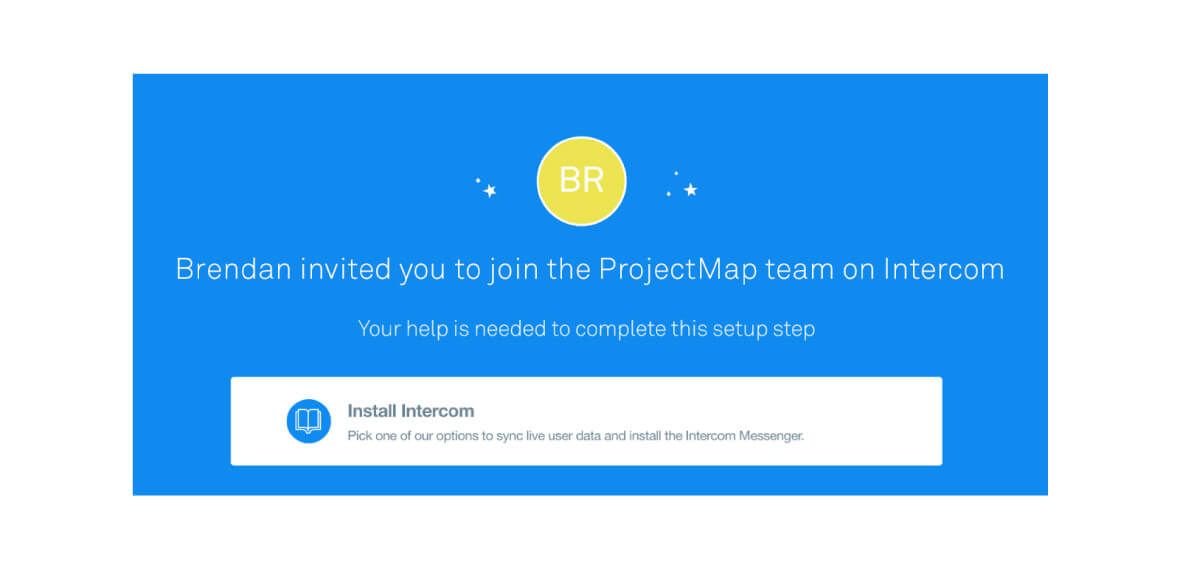
Onboarding for business: How to help groups of users find success
Main illustration: Akshay Varaham
Onboarding a company to your product is different from onboarding an individual user.
It requires many people across departments to get setup and start seeing the value your product can provide.
If you sell your product to businesses and haven’t designed your onboarding to support groups of people, you’re likely asking people to complete tasks they’re not capable of or lack the permissions to do.
As your company grows and starts selling to larger companies, rethinking how your onboarding helps groups of people work together will have a greater impact than optimizing an existing step-by-step flow designed for individuals.
Onboarding for one breaks down for many
Your beautiful, linear sequence of onboarding steps might work well for individual users, but teams behave unpredictably.
So as larger companies start using your product, instead of just asking “How many people made it from step A to step B?”, you might start asking different questions, such as:
- Why would someone in a group be unable to complete this step?
- Who in their company might be able to help them?
- What is blocking them from asking for help?
We’ve asked ourselves these questions as Intercom has grown. Our customers have become increasingly diverse in size, which has impacted the order in which we previously expected common actions to be done.
“Great onboarding acknowledges that different groups of people take very different paths to get started”
Early on the vast majority of our customers were small startups and our onboarding reflected that – it was designed to help one engineer install a JavaScript snippet. But our customer base is no longer confined to small startups – we have to onboard companies there will be undoubtedly more than one person required to code, authorize integrations and teach teams how to use our products.
We’ve learned that great onboarding acknowledges that different groups of people take very different paths to get started, and gives them multiple paths for them to progress as a team.
Designing predictable steps for unpredictable groups
The mistake most companies make is trying to model their onboarding as an ordered series of steps. They have a very definite idea of what steps should be completed in what order. This single linear sequence of steps quickly breaks down for groups of people.
Not convinced? Consider you’re building an iPad app for a reception desk that lets guests sign in and notifies employees when they arrive. In order to be set up, a new customer might need to:
- Sign up for an account
- Enter a credit card to start a trial
- Authorize Google Apps access to get employees email addresses
- Add a legal document or NDA for visitors to sign
- Place the iPad in a stand at the front desk
Completing all of these requires participation from:
- Someone with access to a company credit card
- Someone with administrative access to the Google Apps account
- Legal counsel
- Office manager(s) or receptionist(s)
At a very small company, this could be just two to three people. At a larger company, it could be dozens. Let’s see what happens if you make the mistake of modeling these steps in a linear way.
- Sign up for an account
- Enter a credit card to start a trial
- Authorize Google Apps access to get employees email addresses
- Add a legal document or NDA for visitors to sign
- Place the iPad in a stand at the front desk
If someone without a company credit card signs up, they’ll be stuck on step 2. The same holds for the rest of the steps – the potential for failure is massive. Who has permissions to connect Google Apps? Who knows our lawyer’s email? Who has the stand for the iPad? Who is it I can ask for the credit card again?
“If the only person at a company who can complete your onboarding is the busiest person, with the least time, you have a problem”
Modeled in this way, as a blocking sequence of steps, there’s only one person at the company who could complete every step, unassisted – the CEO. And if the only person at a company who can complete your onboarding is the busiest person, with the least time, you have a problem.
We had a similar problem at Intercom as we grew. Early on, in order to sign up for an account, we made people add a code snippet or import data from a CSV or third-party service. In some ways, this was a good thing – we were able to show customers Intercom working on their own website or app right away.
But it also meant we blocked anyone who couldn’t add a code snippet or import data from doing anything else. Once we changed this to allow anyone to create an account right away, and then add a code snippet or data import afterwards, more people were able to make more progress through our onboarding.
Onboarding checklist for companies
Since it’s hard to predict who will do each task, or which order tasks will be completed in, designing onboarding means designing for a moving target. It requires the humility to know that it will never be perfect. This is especially true for a growing company, whose customers are increasingly diverse and often get larger overtime.
That said, we’ve found three strategies that work for dealing with the unexpected paths our customers take in the onboarding process.
1. Provide an escape hatch
While you have a new customer’s attention, allow them to accomplish as much as they are capable of or have permission to do, right away.
“It’s almost always better to let people keep moving and exploring”
It’s hard to recapture this attention, especially to do something boring like enter a credit card or create an API key. So while you have their attention, provide ways for them to skip to other steps they can accomplish.
Remember, it’s almost always better to let people keep moving and exploring. The conversion rate lost on one small step is made up by the customer’s overall progress and comprehension of what your product has to offer.
2. Unblock steps with invites
You should presume that not everyone will have the ability or permission to complete every step, and provide ways for users to invite the people they need to help them.
Prompting people to invite coworkers means asking the customer to give up some of their social capital – you’re asking them to ask another person for a favor, to take time to set up an account and learn something new.
That’s why it’s important to provide some context – explain why someone is receiving an invite and what they’ve been asked to do. And while it might look old-school, providing links can give people more direct control over how they choose to invite others.

3. Identify and empower an onboarding leader
Without organization and leadership, groups of people have a natural entropy – people disagree, have different priorities and get less done. Chances are, trying out your product is the last thing on the roadmap, and not even something everyone agrees on.
“The solution here doesn’t always start with building more software or writing code”
When someone tries your product, it’s your job to find a leader and empower them to organize their team around getting setup with your product.
The solution here doesn’t always start with building more software or writing code. At Intercom, identifying and empowering an onboarding leader starts with our sales team. Sales teams traditionally try to find the “champion” in a company, the person willing to fight through obstacles to adopt a new product and close the deal.
If you’re responsible for your product’s onboarding, you can learn a lot by finding out what questions your sales team use to identify champions, and also the resources they provide to help them convince others on their team.
Flexible onboarding adapts as you grow
When it comes to onboarding, it’s easy to think everyone will follow the linear paths you’ve wireframed. But groups of people rarely follow such neat paths. Instead, you should assume at each step of your onboarding that the task at hand may be someone else’s job. That way, you can build a flexible onboarding that adapts to different kinds of people, and support larger companies too.
This post is an excerpt from Intercom on Onboarding.








